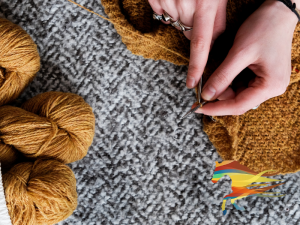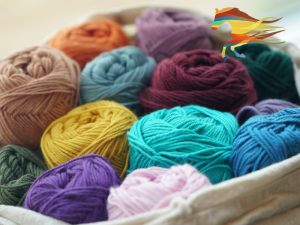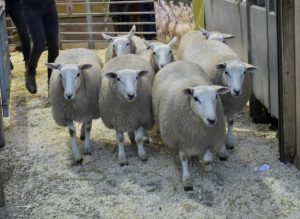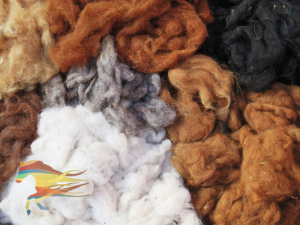

Historically, selling small-scale craft products such as wool or yarn would have meant traipsing around to every craft fair on offer in your area and beyond. And although craft fairs can still play a key role in your farm marketing strategy, they are no longer the only option. Social media has allowed fibre businesses to move their farm marketing online and reach new customers for a relatively low cost.
key role in your farm marketing strategy, they are no longer the only option. Social media has allowed fibre businesses to move their farm marketing online and reach new customers for a relatively low cost.
A wool, yarn or fibre business can be an effective farm diversification for adding value to something that is often a by-product of the sheep farming sector. But there are also lots of other types of fibre to consider, from alpaca to plant-based fibres. fibre businesses are useful for bringing in additional income on a smaller scale and tend to work well alongside a wider farm business strategy or even as a way to make money from your smallholding.
Fibre businesses can range from selling raw fleeces through to spinning yarn and even dying yarns. Regardless of the type of wool business you have, there will be ideas and advice in this blog applicable to your business and your farm marketing strategy.
There are plenty of social media options to use as part of your farm marketing strategy. However, Facebook has some significant benefits when it comes to selling physical products. Elements such as Facebook’s shop option, alongside the ability to use a wide variety of content formats, means that Facebook can offer a highly accessible and effective farm marketing tool. However, as one of the oldest platforms still in main stream use, it can also suffer from being overcrowded and tends to have a slightly older demographic of active users than you may expect.
Key to the success of any farm marketing strategy is to have clear goals and objectives. The same goes for your Facebook strategy: what do you want to gain from marketing your wool business on Facebook? Possible options could be:
All of these goals will require slightly different strategies and tactics for your farm marketing. You should also consider how these goals align with your wider goals for your wool business. For example, increasing views or “reach” on Facebook won’t necessarily lead to a direct increase in sales.
example, increasing views or “reach” on Facebook won’t necessarily lead to a direct increase in sales.
We have been hearing from many people who have previously had good rates of success on Facebook but are now struggling to get any form of reach. This is not an isolated issue. Facebook is currently going through a number of algorithm updates. We don’t yet know the exact outcome of these changes, but while they are happening and for some time afterwards, you are likely to find that your post reach and general business visibility is somewhat limited and/or unstable.
Please don’t panic about it; things are likely to improve soon, once Facebook has finished the updates, and we have all worked out what has changed.
Similar updates are also happening on many Facebook (or Meta) owned platforms, such as Instagram. Our best advice is to keep an eye out for online updates and use trial and error to test out what works for you on the new updates.
 Facebook reels and video content
Facebook reels and video contentOne of the new changes we do know about is the introduction of Instagram style Reels for Facebook. This is in part to compete with TikTok and also to encourage TikTok creators to engage with Facebook using the same or similar content.
If you already create content for Instagram, specifically Instagram Reels, then you can have this content also appear on Facebook. You may also benefit from reposting it directly to Facebook at another time to get maximum benefit from each reel-style video you create.
Reels should be short, fun and engaging. If you are unsure how to get started, check out some of our Instagram Reel focused blogs or look at current trends you enjoy watching on either platform or those that are popular. This can give you ideas for your own content.
Outside of Reels, you should also consider using video content as a key aspect of your farm marketing plan. Video content is currently the most popular and engaging form of content on any social media platform. This is unlikely to change moving into 2023 and so getting confident using video content is likely to have a significant impact on your social media marketing success.
Video content for wool businesses needn’t be hard. Some ideas could include:
Many people don’t understand the difference between Facebook Boosts and Facebook Ads. In fact, some people aren’t even aware there are two paid options on Facebook for advertising. So, what is the difference, and why does it matter?
When you post on Facebook, your post will only be shown to a small percentage of your business page followers. If these followers engage with the post, then Facebook will show the post to more of your followers and so on.
Facebook Boosts are essentially a fee you pay for your post to be shown to more of your followers, their friends and those Facebook deems to have similar interests/demographics as your followers. This can be a very useful tool if you have a large, well-engaged follower base who fit your ideal customer well and are likely to have friends who also fit your ideal customer.
However, this is rarely the case for small and new farm brands on Facebook. There is a good chance most of your followers are people you know who you have invited to like your page to help gain some exposure. If this is the case, Boosts will have little benefit for you, particularly as you have no control over the targeting.
Facebook Ads on the other hand can be targeted and controlled by you. These work independently of your current follower base: you choose the content of the advert, you choose the targeting, and you can get a far more detailed analysis of the results. You can also exclude people from viewing your adverts such as those who might be offended by your advert (yes, that does mean vegans if you are an animal-product-based business such as wool). For more information on Facebook Advertising, check out this blog.
Facebook shops were introduced some years ago. Facebook touted them as an effective way to support small businesses, which in some ways is true, but it is also a way for them to keep users on the platform rather than clicking away to a seller’s website or similar.
the platform rather than clicking away to a seller’s website or similar.
Today, Facebook shops can be very effective, especially for small product businesses such as wool businesses. The key is to ensure you are keeping them up to date, and turn on all the options relating to the products being searchable, including automatic listing through marketplace.
Clear product descriptions and stunning product photos also help improve the sales through Facebook shops. Ideally, offer the option to buy with One-Click without leaving Facebook. If this is not a feasible option for your business, make sure to keep the steps to purchase to a minimum. The more times people have to click a button, the more likely they are to abandon an option. You could include smart links that not only redirect the customer to your website but also add the product to their basket and link to the checkout in one click.
Normally when I talk about SEO (search engine optimisation) people tend to assume they only need to listen if they have a website. But SEO impacts your online visibility everywhere, any time there is a search engine. Social media platforms are search engines too, and possibly none more so than Facebook.
You can use SEO research to inform your choice of wording, your choice of social media platform and even the type of content you use for social media. Making sure you have a clear understanding of how your ideal customer behaves online and how they search for your business will enable you to target them much more effectively through your farm marketing.
If you are using Facebook shop, this is especially important as your title for products needs to be SEO friendly to show up on the marketplace search and similar.
To find out more about SEO, check out this blog.
 In recent years, Facebook has increased their efforts to reduce organic reach for businesses on the platform. This encourages businesses to spend more on advertising with Facebook, which generates them income.
In recent years, Facebook has increased their efforts to reduce organic reach for businesses on the platform. This encourages businesses to spend more on advertising with Facebook, which generates them income.
At the same time, Facebook has invested considerable resources into developing Facebook groups and enhancing the group experience. This is because Facebook has recognised that people are inclined to find their tribe on social media and want to engage with others on topics they care about. Facebook groups facilitate this, and by bringing together strangers who have a common interest but may have varied opinions, the groups facilitate discussion and debate that increases the speed and amount of content being added to Facebook. All this benefits Facebook.
One of the more recent updates to groups has been the option to allow business pages to join and interact in groups as the business. This offers an opportunity to incorporate Facebook groups into your farm marketing. Not all groups allow this option, but many do, and it is a fantastic way of engaging with users as your business.
Groups provide an ideal way to reach new potential customers or collaborators within the tribe that suit your wool business. Groups can be seen as a captive audience of your ideal customers, and the key to using Facebook groups effectively for farm marketing is to find the right groups for your farm business.
To find out more, check out this blog.
You may also wish to consider creating your own group that is managed by your business page. This could be based either on regular customers where you run exclusive sales or similar, or it can be used to attract new customers and bring your existing customers together, and share your products with them.
Creating content can feel like a never-ending struggle, but there are things you can do to reduce this. Our top tips are:
We often talk about creating engaging content, but what does this really mean? Well, that depends. The first step is to ensure you are choosing a format that your customers enjoy and are likely to react to. For example, some customers will love video content, but others may engage better with written content. The second step is to ensure you are creating content that asks the customer for a response; this could include asking questions or directing them to complete a specific action.
Once you have engagement from your audience, make sure you build on it. Reply to all comments and, where possible, try to start a conversation. So often I see businesses respond to comments with a simple emoji or with a “thank you”. Try to go one better; can you ask a follow-up question? Or can you give them additional feedback or information?
This need for responsiveness also goes for your messages on Facebook. If a customer contacts you through Facebook messages, try to reply as soon as you can. If you struggle to do this, you can set up automated replies that should answer the most common questions and show the customer that you aren’t simply ignoring them.